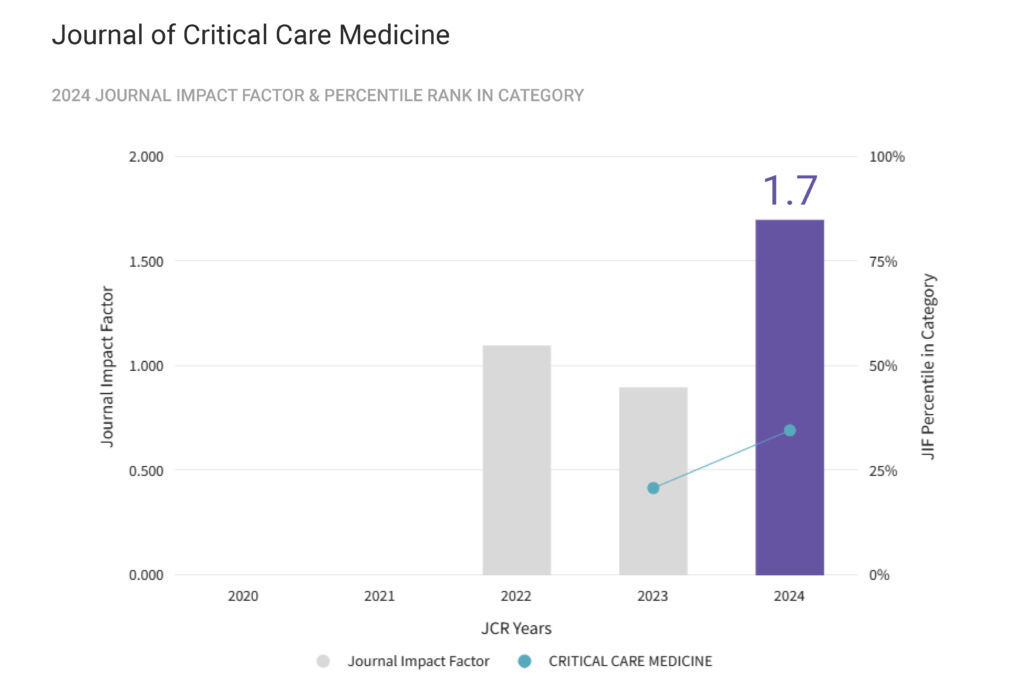Introduction: Total hip arthroplasty (THA) is a standard orthopedic procedure. Deep vein thrombosis (DVT) and pulmonary embolism are potential life-threatening postoperative complications.
Aim of the study: This study aimed to assess the prognostic value of systemic inflammatory indices [monocyte-to-lymphocyte ratio (MLR), neutrophil-to-lymphocyte ratio (NLR), platelets-to-lymphocyte ratio (PLR), systemic inflammatory index (SII), systemic inflammation response index (SIRI), and aggregate index of systemic inflammation (AISI)] and their potential association with acute postoperative DVT.
Materials and methods: We designed a multicentric, retrospective, observational cohort study, including adult patients undergoing elective HTA. Patients were divided into two groups, the DVT and non-DVT groups. We investigated the development of acute DVT early, and at 4 weeks after surgery and also registered length of hospital stay and mortality. All demographic data and laboratory data, hematological indices were extracted from patients files.
Results: 199 patients were included. Of those, 12 (6.03%) developed DVT and 187 (93.97%) did not. There was no statistically significant difference between patient age, gender, BMI, smoking status or comorbidities. No difference was founds between the two groups regarding median values of MLR (0.31 vs 0.27, p=0.12), NLR (3.16 vs 2.42, p=0.27), PLR (163.39 vs 123.01, p=0.27), SII (660.26 vs 568.52, p=0.33), SIRI (67.5 vs 65.26, p=0.89) and AISI (302.35 vs 290.48, p=0.85). Length of hospital stay was not significantly different (median 9 days in the DVT group vs 7 days in the non-DVT group, p=0.38), but mortality was significantly higher in the DVT group (3 deaths vs none in the non-DVT group, p<0.001).
Conclusion: MLR, NLR, PRL, SII, SIRI and AISI were not associated with the development of acute DVT following HTA in our study population.
Tag Archives: deep vein thrombosis
Managing Multifactorial Deep Vein Thrombosis in an Adolescent: A Complex Case Report
Introduction: Although rarely diagnosed in the pediatric population, deep vein thrombosis (DVT) is experiencing a growing incidence, while continuously acquiring different nuances due to the widening range of risk factors and lifestyle changes in children and adolescents.
Case presentation: A 17-year-old female within four weeks after child delivery was admitted to our clinic due to a six-month history of pain in the left hypochondriac region. After a thorough evaluation, the presence of a benign splenic cyst was revealed, which was later surgically removed. Following the intervention, the patient developed secondary thrombocytosis and bloodstream infection which, together with pre-existing risk factors (obesity, compressive effect of a large cyst, the postpartum period, the presence of a central venous catheter, recent surgery, and post-operative mobilization difficulties) led to the occurrence of extensive DVT, despite anticoagulant prophylaxis and therapy with low-molecular-weight heparin.
Conclusions: DVT raises many challenges for the pediatrician, requiring a personalized approach. Although rare, pediatric patients with multiple concomitant high-risk factors should benefit from interdisciplinary care as DVT may not respond to standard therapy in such cases and rapidly become critical. Continual efforts to better understand and treat this condition will contribute to improved outcomes for pediatric patients affected by DVT.










